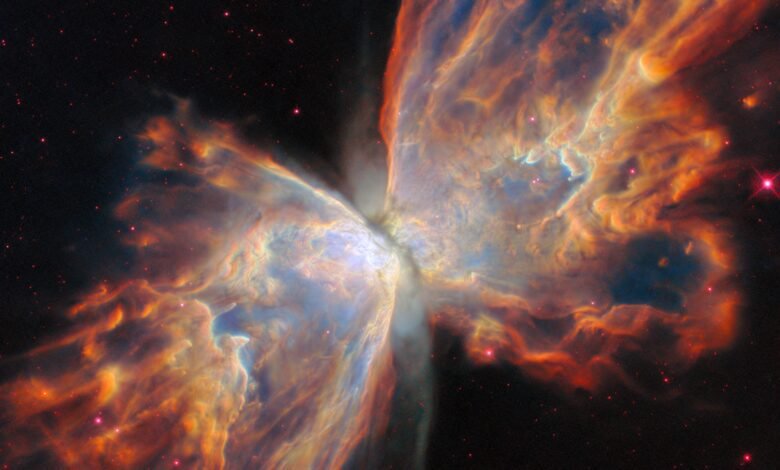Astronomers Discover ‘Cosmic Butterfly’ That Could Reveal How Earth Was Formed

In a breathtaking corner of the universe, astronomers have spotted a “Cosmic Butterfly” nebula that may hold the secrets to how planets like Earth are formed. This glowing cloud of gas and dust offers a rare glimpse into the birthplace of stars and planets.
What is the Cosmic Butterfly?
The Cosmic Butterfly is a stellar nursery shaped like butterfly wings. Its glowing gas and dust are sculpted by powerful stellar winds from young stars. These cosmic forces push and shape the material, creating intricate symmetrical patterns visible across thousands of light-years.
Why It Matters for Planet Formation
This nebula isn’t just beautiful—it’s scientifically important. Astronomers study the Cosmic Butterfly to understand how dust and gas clump together to form planets. Observing these processes in real-time helps researchers recreate the early conditions that led to the formation of Earth and other planets in our solar system.
“Studying nebulae like this allows us to see the universe’s natural process of building planets,” says Dr. Elena Martinez, astrophysicist at the Institute for Cosmic Origins.
Clues About Earth’s Origins
Over 4.5 billion years ago, a similar cloud surrounded our young Sun. Within this cosmic material, particles collided and formed planets—including our own. The Cosmic Butterfly provides a window into this ancient process, helping scientists refine models of planetary evolution.
Advanced Technology Reveals Cosmic Secrets
Telescopes like the Atacama Large Millimeter/submillimeter Array (ALMA) capture detailed images of the nebula. By analyzing radio and infrared signals from the gas and dust, astronomers can map the structure and motion of the Cosmic Butterfly in stunning detail.
A Cosmic Reminder
The Cosmic Butterfly is more than a scientific discovery—it’s a visual reminder of our cosmic origins. From clouds of gas and dust, entire solar systems and planets emerge, including our own Earth.